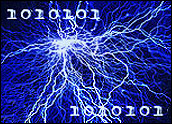
Researchers at St. Louis University in Missouri on Sunday announced the development of a fuel cell battery powered by liquid sugar at the American Chemistry Society’s 233rd national meeting.
Using nearly anything from natural substances such as tree sap to man-made beverages including soda, the new technology could potentially operate three to four times longer on a single charge than conventional lithium ion batteries, scientists said.
“This study shows that renewable fuels can be directly employed in batteries at room temperature to lead to more energy-efficient battery technology than metal-based approaches,” Shelly Minteer, an electrochemist and the study’s leader, told TechNewsWorld. “It demonstrates that by bridging biology and chemistry, we can build a better battery that’s also cleaner for the environment.”
The benefit for consumers could be substantially longer talk and playback time for cell phones and digital media devices such as the iPod, according to researchers.
As the technology is biodegradable, the batteries have a one-up on lithium ion in environmental impact.
Sugar High
One of the major problems with batteries is that they are not very efficient, Minteer told TechNewsWorld. The consequence for consumers is that they spend a lot of time recharging their batteries.
Using sugar to generate energy is not new. In fact, all living things convert sugar into energy in one way or another, Minteer explained. The challenge, however, was to create a way to harness the energy-dense power of sugar to produce electricity efficiently.
“What my group did was we looked at the fact that when humans, animals or any living cell consumes sugar or carbohydrates, the body is extremely efficient at converting the simple energy from that fuel into the energy to you need to go out and about and do everything we do every day – – energy to grow, to run a marathon,” she said.
Similar to other fuel cells, the Saint Louis University researchers’ sugar batteries contain enzymes that convert the sugar into electricity. Minteer has successfully run batteries on glucose, flat sodas, sweetened drink mixes and tree sap.
However, tests conducted using carbonated beverages failed, Minteer noted, as carbonation seems to weaken the fuel cell. In the case of sugar fuel, the simplest approach is best. Ordinary table sugar (sucrose) dissolved in water came out on top in test results.
“We took that process that happens in the body and we mimicked it on an electric circuit,” Minteer said. “We just made a much more efficient battery.”
After all of the energy has been discharged, the battery keeps on giving. Not only are the batteries biodegradable, but, according to Minteer, the battery’s main byproduct is water. While lithium ion batteries contain no toxic metals, they do include cobalt, copper, nickel and iron. In the U.S., roughly 2 billion batteries make their way into municipal landfills and incinerators.
Convenient Recharging
If the research continues to show promise as the technology is tested and refined, Minteer said that it could be ready for commercial manufacturing within three to five years.
Funded by the U.S. Department of Defense, the batteries are of particular interest to the military to charge portable electronic equipment on the battlefield and in emergency situations when access to electricity is limited. Devices could be instantly recharged, Minteer stated, by adding any convenient sugar source. One example of possible use includes remote sensors for detecting biological and chemical weapons.
Consumers could see the battery first used as a portable recharger for cell phones akin to similar other quick recharge products already on the market that enable users to instantly recharge their mobile phones on the fly. The recharges would ideally consist of special cartridges pre-filled with a sugar solution, which could be replaced when they are used up.
Eventually, Minteer said, the sugar battery could replace traditional batteries depending on that battery’s function.
“Whether it replaces every battery is probably going to be a function of what the needs of that battery are,” she explained. “If you have a little disposal battery in your remote control, those batteries — though there are some environmental implications — are really cheap and work really good. So we’re not trying to replace that type of battery.
“We are trying to replace the rechargeable batteries — those that tend to be a little more expensive and have more environmental hazards, etc.,” she continued.
Long-term goals include developing a battery for laptops and other similarly-sized devices. Other avenues of research include modifying the battery’s performance for varying environmental conditions, such as high temperatures and extending the life of the battery.




















































